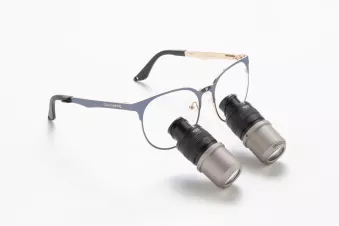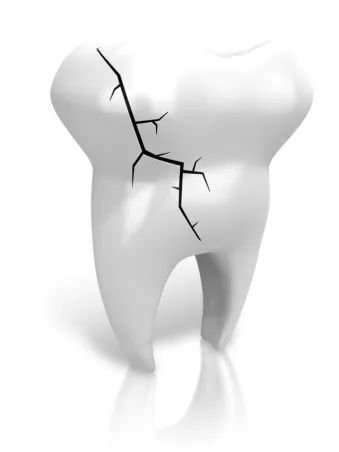A patient presents with pain in a tooth, complaining “it hurts when I bite on it”. We take a radiograph, and nothing is evident in the image. The apical of the tooth has no notable lesion or widening of the apical PDL. The PDL along the root is normal width, no bone loss is evident, and we are scratching our head as to what could be causing the issue that brought the patient. We suspect, maybe the pulp is leaning to the “bad side” or maybe something structural is going on. Maybe a crack?
Recently, a patient presented at my practice with the common complaint of pain on biting, with no hot or cold sensitivity. She had come in for a 2nd opinion as another dentist wasn’t able to find what was causing it and suggested the tooth needed Endo. I took a new radiograph, saw no pathology or bone loss around the tooth, no recurrent decay around the old amalgam. No hot or cold sensitivity when I tested the tooth and adjacent ones. But, when I percussed the cusp tips on the problematic molar, there was slight sensation on the mesial lingual cusp compared to the others. I suggested to the patient the best approach to see what was causing the problem was to remove the old amalgam and see what was under it that may be the cause. She agreed and after placing local anesthetic, the amalgam was removed. I dialed in 5x on my loupes and nothing seemed to be notable on the pulpal floor. I took the bur out of my fiberoptic highspeed handpiece and placed the handpiece head on the buccal and touched the rheostat to activate the handpiece light. The light illuminated the tooth except for the two lingual cusps, those were dark, signifying a crack was running along the pulpal floor where it met those cusps. I informed the patient of my finding and suggested we place a bonded resin core and prep for a crown and have her use the temp crown for a week or so and see if the sensation that brought her in disappeared or worsened. If it disappeared, then we would have the crown fabricated at the lab and lute that when it returned and most likely that would solve the problem. But, if the sensitivity increases or the tooth becomes temperature sensitive, we should do Endo before placing the crown, as the crack was involving the pulp. She agreed and a bonded core was placed, tooth prep for the crown, impression taken, tooth temporized and off she went home.
I remember sitting in a lecture many years ago and the speaker talking about a device to transilluminate the tooth to aid in identifying those cracks. An older dentist friend sitting next to me leaned over and said, “you don’t need that tool”. I figured he was about to tell me something that GV Black personally told him when he was in dental school. But, I was surprised when he asked me if I used a fiberoptic handpiece in my office. I told him yup, I love practicing with it. He then told me pop the bur out and place the spot on the handpieces head where the light comes out to the tooth and step on the chip air button on the foot pedal and the light is activated. And there you had it - a transilluminator without having to purchase something new. That was the best pearl I ever learned at a lecture and it came from an old dental friend sitting in the audience next to me. Sometimes we ignore experience, but in my 36 years in practice I have learned to listen to the “old guys” who have been practicing longer than me for those tips that can be practice changing.




